There are several major car brands that may not exist a year from now. One of them is Nissan.
A piece in the Financial Times the other day quotes a source within the company who says “we have 12 or 14 months to survive.” Nissan recently announced plans to lay off just shy of 7 percent of its global workforce – some 9,000 people – and that it will cut production capacity by 20 percent. There are rumors the company is in talks with Honda about the possibility of the latter buying a major stake in Nissan – but that seems unlikely for the same reason a healthy dog won’t put a dead chicken around its own neck.
Hilariously – in the gallows humor sense – the fools over at Motor Authority say that a “partnership with Honda . . . will help Nissan expand its EV lineup.” But expanding its EV lineup is the very last thing Nissan needs if it wants to avoid the fate of Studebaker, Pontiac and Plymouth.
It is because Nissan malinvested in the EVs it already has that it has “12 or 14 months to survive.” It has been losing money on the Leaf – its first EV – since this device first came out back in 2010 and fifteen years is a long time to lose money “selling” a vehicle that cannot be sold for a profit – the same being true of every battery powered device that has been produced thus far. Including Tesla’s devices – which do not sell for a profit. The devices are internally subsidized by Tesla, which makes money by selling carbon credits to other car companies that – effectively – have to buy them to appease the regulatory apparat. It is either that or malinvest in their own devices, which would cost them even more money than they lose buying “credits” from Tesla. 
Tesla also makes money via the stock market. People buy Tesla stock because the regulatory apparat is effectively forcing (via the regulations) the production of its devices, which stock buyers assume will lead to people buying them. And up to now, this grift has worked – for Tesla – because there were enough people willing to buy its devices. But that pool is drying up fast – because here are only so many people who can afford a $50k device – and so Tesla is now headed down the same road as Nissan.
Ordinarily, Nissan – like any car company free to heed the market – would have stopped selling the Leaf ten years ago, after it became clear the thing could not be “sold” except at a loss. It is why Pontiac stopped selling the Aztek after just five years. Too late, alas, for Pontiac.
Instead, Nissan – like so many car companies that rolled up their sleeves and got “vaccinated” with the EV mRNA drugs pushed by the regulatory apparat – malinvested in more EVs, including most recently the device Nissan calls the Ariya. Whatever that means. It sounds like the sound something that just jumped off a cliff might make on its way down.
The Ariya has lost even more money than the Leaf on a per-vehicle basis because each Ariya device costs about $20,000 more to start ($39,590) than a Leaf device ($$28,140). It doesn’t take long to bleed white manufacturing $40k vehicles that end up being “sold” for much less than that – and which Nissan was already internally discounting before that. Nissan’s other models – the ones that do sell in the sense that they make money – have become more expensive to offset the losses incurred by the manufacturing of devices such as the Leaf and the Ariya.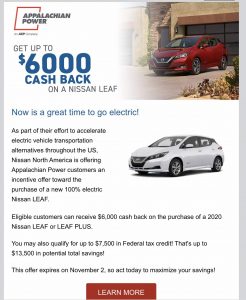
This is not just Nissan, either.
Every car company that has been injected with the EV mRNA drugs that have caused them to believe there is a “market” for devices has had to offset its losses by folding them into what its other vehicles cost. This is one of the reasons why the average cost of a new vehicle has increased by thousands of dollars over just the past four years.
It is also why Nissan – and it is not just Nissan – has resorted to selling high-profit-margin vehicles rather than selling volume vehicles.
The distinction is important.
An example of a high profit margin vehicle is – as regards Nissan – the current (2025) Frontier pickup. It stickers for $32,050 to start. It is a big truck – almost full-size, at least by the standard of the late ’90s – and comes standard with equipment and features that were once generally optional in a truck, such as air conditioning and power windows and locks and an automatic transmission. Which is why it is a high-profit-margin vehicle. Nissan makes a lot of money, per vehicle, each time one sells.
The old Frontier – the compact-sized one – was last made back in 2004. It is an example of a high volume vehicle. It did not come standard with an automatic transmission or power windows and locks. It came standard with a four cylinder engine (no turbo, no hybrid-assist) and a manual transmission. And that is why it stickered for $13,490 when it was new.
Nissan did not make a lot of money, per sale, on this truck. But it sold scads of these trucks – and made money on volume.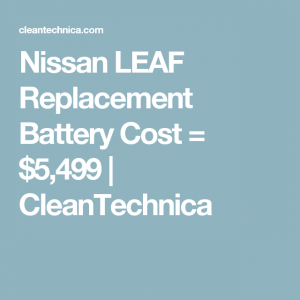
Nissan only has one vehicle like that in its current lineup, the Versa. But it’s cancelling it – at the same time the market for affordable vehicles is desperate for such vehicles. Especially an affordable small truck – which no one offers for sale in this country as of now. The closest thing is Ford’s Maverick – which looks like a small truck but is really a small crossover made to look like a truck. The fact that it still sells well even though Ford jacked up the price from just shy of $20k to just shy of $27k for the hybrid iteration is what they call in law enforcement a clue as to what sells – and what doesn’t.
Maybe Nissan will be able to detox the EV mRNA from its veins and recover. But it may already be too late – and not just for Nissan.
. . .
If you like what you’ve found here please consider supporting EPautos.
We depend on you to keep the wheels turning!
Our donate button is here.
If you prefer not to use PayPal, our mailing address is:
EPautos
721 Hummingbird Lane SE
Copper Hill, VA 24079
PS: Get an EPautos magnet or sticker or coaster in return for a $20 or more one-time donation or a $10 or more monthly recurring donation. (Please be sure to tell us you want a magnet or sticker or coaster – and also, provide an address, so we know where to mail the thing!)
If you like items like the Baaaaaa! baseball cap pictured below, you can find that and more at the EPautos store!





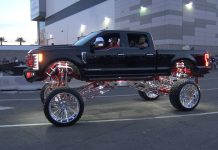

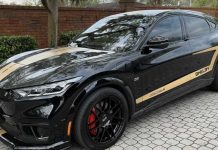

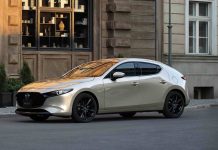

I don’t think Honda really has any prevailing business interest to buy into Nissan. What do they make that Honda doesn’t already make or want to? Any markets they do compete Honda crushes Nissan on quality and price/value.
Perhaps Honda could bolster their trucks, Honda has never made any real body on frame trucks. Their Ridgeline and Pilot are unibody scaled up versions of the Maverick essentially. Which is fine. Most truck buyers do not really need a truck and aren’t willing to live with the compromises, like handling and ride, to carry their golf clubs and mountain bikes to a trailhead. Nissan makes trucks, big ones, buses and stuff, that might be important in some commercial markets or perhaps to the Japanese government.
So that said, Japanese business culture probably dictates that Honda and Toyota help Nissan. It’s happened before, Nissan in the 1960s buying a stake in Fuji Heavy Industries (Subaru) and later Toyota doing the same. They have a different culture that’s less western cut throat competitive. They have a more “rising tide (or perhaps sun) raises all boats” mentality.
In addition to EV malinvestment weighing Nissan down, they lost a lot of their reputation for reliability when they were one of the first to go CVT only on many (most) of their models. That plus the merger with Renault which didn’t help either.
“The devices are internally subsidized by Tesla, which makes money by selling carbon credits to other car companies that – effectively – have to buy them to appease the regulatory apparat.”
If that’s not enough to convince someone that this whole “climate” and/or “environ-mental” thing is a scam, then God help us.
I just keep repairing my 2001 Anniverary Edition Maxima (V6, standard drive, no GPS, no camera, no annoying voice). From the era when cars were cars and a pleasure to drive. Still going strong at 172,000 miles.
Not only did Nissan pursue the Leaf beyond all reason; until recent years, it wasn’t even worth consideration. It initially had what, a 75 mile range? That’s laughable! Even in its current iteration, one has to pay extra to get the somewhat respectable 215 mile range. Even then, the similar, now discontinued Versa Note offered twice the range at half the price, yet Nissan discontinued the Versa Note while keeping the Leaf. Those are, shall we say, head scratching decisions? No wonder they’re on their deathbed…
The Nissan LEAF has always been laughable, no matter the version or generation. And to think that LEAF is allegedly an acronym for “Leading (sic!) Environmentally-friendly Affordable Family car”…
What killed Nissan? Well, Nissan killed Nissan, and LEAF is part of the explanation of how they did it.
“What Killed Nissan?”
And Infiniti…
Or Nissanity, as I like to call it… Does it even exist anymore?
Infiniti exists – on life support.
From some of the best vehicles –
I’ve got a 2012 G37, and an award
wining V6 engine, to now…
Shame, used to make some amazing cars too. Wonder if there’ll be small shops popping up to fix the Z’s and GTRs that remain in the wake of a dead nissan
The DEI math current MBA & accounting graduates have been taught by the woke universities says that:
Loss per vehicle x volume = profit !!!
After all, everyone knows that ‘freedom = slavery’…
And a ‘market’ is whatever the government says it is. Like the ‘market’ in ‘carbon trading’.
Or the ‘market’ for ‘renewable energy’.
Just like Humpty Dumpty explained to Alice, when she found herself lost in Wonderland.
This is one very deep rabbit hole we’re finding ourselves in, that’s for sure. And getting deeper by the day.
Capitalism rewards and punishes based on decisions.
Nissan made the bad decision to pursue EVs.
Poor quality for a number of years has spoken.
CVT transmissions sure didn’t do them any favors either. Then doing poor customer “service” by not replacing those transmissions…..
The crux of Nissan’s problems is that Nissan is now selling more political products than economic
products.
The difference between economic products and political products is thus: Economic products are produced and sold on the basis of the market forces of supply and demand, as well as profit and loss. The market has shown that there is demand for vehicles like the original Nissan Frontier and Nissan Versa—simple, affordable, reliable vehicles—and those vehicles created a profit for Nissan.
Political products, on the other hand, are produced and sold on the basis of government diktats rather than supply and demand, as well as without regard to profit and loss. Nissan produces the Leaf and Ariya and sells them at a loss basically because Uncle Sam has them to do so, regardless of whether the market demanded them and whether Nissan can sell them at a profit.
Nissan decided unwisely to go all in on its political products at the expense of its economic products. That’s why they’re in trouble.
EVs as a whole are political products, not economic products. It’s even more galling when you consider that we can’t buy products like Toyota’s Hilux that are cheap, reliable, and actually conserve fuel and pollute less than EVs—nor can we choose clean diesel, compressed natural gas, and ultra-compact cars, among other things.
‘Political products are produced and sold on the basis of government diktats’ — Bryce
Here’s another one, which could put our lights out:
‘By 2030, 60% of the California’s electricity must be from renewable sources. Utilities buy most of that energy in advance on fixed price contracts with solar farms.
‘In the last two years, when prices fall to $0 on the market, solar farms keep producing. Some keep generating even when prices plummet deeply negative, where they then have to pay heavily to put their power on the grid.
‘Federal taxpayers paid $54 million to subsidize the 2.6 million megawatt hours that California curtailed in the 12 months ending in October 2023. An even bigger source of revenue for solar farms is the so-called renewable energy credit (REC).
‘A utility or an airline can buy the RECs and then say it burned less fossil fuels than it actually consumed, a practice some criticize as greenwashing. Their price rose from $15 to $75 a megawatt-hour in the last two years.
‘That means a solar farm can still earn a profit even when prices are deeply negative. Last year, prices plunged to negative $145 per megawatt-hour or below as the sun was shining, CAISO said. Then the sun sets. And power prices can spike to $50, $100 or far more.’ — LA Times
https://archive.ph/fSAB1#selection-3211.0-3215.71
Stalinist economics featured value subtraction — selling goods at below production cost. Selling electric power in Commiefornia for minus $145 per megawatt-hour is value subtraction on a breathtaking scale.
How many years till ‘lights out’ for this deranged green shitshow, with its ‘non-market market’ for non-dispatchable power?
The “green shitshow,” as you call it, is political products writ large.
It’s a great racket, for a small club.
And the general public ain’t in it, nor will it ever be.
I remember when Nissan was Datsun……Yea I am that old,. My first 3 cars were 240Zs. Also had a 521 pick up truck.They were all simple well made cars and trucks.Those days are long gone…only some tattered photos left of my miss spent youth. By By Nissan.
Ditto, Zane! Remember this one? https://www.youtube.com/watch?v=uHziYnMaH2g&ab_channel=BionicDisco
By far preferred my Mazda 808 to the B210. The Mazda was more reliable though it too had an appetite for exhaust & mufflers and alternators. Hard to complain about the exhaust system though – back in the days of mild steel and lots of road salt.
Shame the bodies didn’t do much better than the exhaust.
Galvaneal steel and e-coat would do wonders but now we are back to adding costs.
On the other hand my 92’ Mazda B2600 was affordable and is still truckin’ so the cost add of Galvaneal and e-coat by the 90s was a decent value / cost add.
Yeah. I remember those ads. Like it was yesterday.
I sure do…Datsun we are driven…I sure drove the hell out of those 240Zs…..God I loved those cars.
As a long time Nissan driver this is really sad. Had a 1994 Sentra, 05 Sentra and still have 11 Altima Coupe. The 94 Sentra was a well built car. Simple and easy to fix. The 05 Sentra had 180k just prior to finding a guardrail during freezing rain. No real problems with the Altima coupe after I replaced the brakes with good quality parts. To watch this company go from quality and value to overpriced golf carts is heart breaking. I learned how to drive a stick, how to do auto repairs, buying my first large purchase on Nissans. If they went back to their lineup from 2010 to 2012, they would make a good profit. But instead they choose to destroy what they were and become something else. Nissan and others need to go back to quality engineering, distinctive aesthetics and reliable vehicles.
Hi Billy,
I feel the same way I love my ’02 Frontier and I loved my ’98 before it. If Nissan still made Frontiers like that, I’d buy another. BUt I have no interest in an automatic-only, $30k-plus touchscreen’d mobile app, which is what the new Frontier is.
“Nissan and others need to go back to quality engineering, distinctive aesthetics and reliable vehicles.”
Yeah, not going to happen. Once you become part of a gang, there’s only one way out.
Dodge is scrapping the stupid charger EV already, and adding a v8 as fast as possible. Let’s hope it saves them in time. At a min. they should put the old great V6 in it now to sell something. Same issue with the Ram, the I6TT isn’t selling. Such a shame Stellantis sucks so bad and bought into to the BS. The then new ’19 Ram was a game changer. Caught Ford and GM sleeping, gained mega market share, now all going away. GM and Ford have caught up too. Lets hope they can get a v8 in as fast as possible. We’ll see.
I even heard a rumor that Ram may bring back the old 5.7 without cylinder deactivation! Which has plagued all newer engines with poor reliability.
So are we entering an era of less complicated engines? I hope so. Let’s hope that EPA, CAFE, etc… all go away permanently.
I doubt all this potential good will happen though with all the embedded, powerful, and corrupt system.
Great, there goes my 5 year 100,000 mile bumper to bumper warranty on my ’23 Titan. I might have to go back to Fix Or Repair Daily.
That acronym should be changed to “Finance Or Replace Daily”!
In 2011-12, Nissan had a share price of 17 dollars and maybe up to 20 dollars.
The DJIA was 13,000. NSANY is at 484 cents per share, anything under five dollars per share is considered a penny stock. Nissan’s share price should be close to 50 dollars per share doing some simple math.
I read a story about Nissan going all electric, a year ago or so, one comment I read about the change was to sell Nissan stock if you had any.
General Motors had a ticker symbol beginning with an M, can’t remember the rest of the letters, didn’t matter, it meant they were broke.
I bought a brand new Pathfinder in December of 2012, a few maintenance problems that got solved, cam sensors were replaced, another sensor to make the change complete.
187K on the motor, still runs good. Change the oil and install new rotors and brake pads, out with the old and in with the new.
You can’t ignore what has to be done.
You can fly from point A to point B in about three hours of flight time, with a three hour layover, maybe 10 hours total of running around to get there, a distance of 1600 miles, can’t beat that unless you are on a rocket ship.
Nissan could manufacture private jets and a few rockets, that is where the money is, not some electric vehicle nobody wants, evah.
‘General Motors had a ticker symbol beginning with an M.’ — drumphish
Motors Liquidation Company’s stock symbol was changed from GMGMQ to MTLQQ, effective July 15, 2009.
They’ll need a new one this time round, after EeeVee Mary floats away on her golden parachute.
How about Futility Liquidation Company, FTLQQ? Pronounced Futile Cuckoo.
They coulda been a contendahhhhh …
Saguaro cacti in Arizona have a limit of elevation at 4167 feet at the peak of its cactus line, you are there at the National Park.
The desert biome drifts to a forest biome when you are in Flagstaff, 6800 feet in elevation. It’s too cold for Saguaro to exist at that elevation. Ponderosa pine is the dominant species up there that far north and higher elevations in Arizona. I did see the ghost of Ben Cartwright in the pines.
Goes from cacti line to treeline just like that.
8,880 feet on the north rim of the Grand Canyon is getting to be mountainous terrain that is that way for a good hundred miles. If you don’t have a winter coat, you’ll freeze to death. You will seek shelter.
From 8880 feet down to 3600 feet in elevation of the Colorado River is a steep drop.
You have to see it to believe it.
The Deep State is envious of what the fascists in Arizona have.
‘Arizona Public Service operates a 24-hour trading floor in Phoenix looking for California’s cheap or negatively priced solar power. Sometimes, Arizona Public Service turns off its own solar fields to take California’s excess.’ — LA Times
‘California’s excess’ — yuk yuk! Bit of a double entendre there. That stenographer needs to be punished. Socialism is very serious business.
https://tinyurl.com/2jbrxrpd
“NSANY is at 484 cents per share, anything under five dollars per share is considered a penny stock. Nissan’s share price should be close to 50 dollars per share doing some simple math.”
Not disagreeing with you in any way, but I’d just add that the stock market ceased to be an indication of a company’s real worth a long time ago.
Tesla pricing has been utterly ridiculous for years now. And as Eric says, Elon has been using equity sales – and subsidies, of course; always subsidies – to prop up his loss-making EV manufacturing business.
Yet the fantasy persists. This is because in the Fed-distorted financial ‘markets’, clowns and liars rule supreme and previously time-tested strategies like ‘value investing’ are increasingly worthless.
Even Nicola (NKLA) still exists, despite their blatant fraud with the ‘hydrogen truck’, to name just the most blatant. There are literally dozens of others.
I seriously think that two companies using Nikola Tesla’s first AND last names being fraudulent, is no coincidence. Because apparently, smearing a genius’ good name, and destroying ALL of his documents after his death, was not enough for our dear leaders!
[Hilariously – in the gallows humor sense – the fools over at Motor Authority say that a “partnership with Honda . . . will help Nissan expand its EV lineup.” ]
Amazing isn’t it? Journalists are so tied to Marxist ideology they actually believe continued forcing of that which the proles don’t want and can’t afford IS the solution.
I’m thankful that we still have an automotive journalist like Eric and a platform to tell the truth from.
Thank you Eric!
In other news, a “partnership with NATO … will help Ukraine expand its net-zero power generation lineup.” LOL
This is the craziest war that could ever be
Don’t turn on the lights ’cause I don’t wanna see
— Three Dog Night, Mama Told Me Not To Come
“A partnership with NATO … will help Ukraine expand its net-zero power generation lineup.”
Well you gotta admit:
When they’re all dead, they will have been the first nation to successfully achieve ‘net zero’!
Perhaps that’s been the plan all along?
Looks like Nissan forgot to invest in knee pads before it started kneeling to the “regulators”.
If I were Nissan’s consigliere, I’d advise them to abandon the the US (and western) markets and focus on South America, Africa, and Asia. Basically stick with the BRICS countries. Hey that’d make a great marketing jingle! “Wanna survive? Stick with BRICS”.
Right now nearly any faltering automotive company with the ability to manufactuer their cars even semi globally has a chance to save their company rather than letting it die a miserable death, at least here in the states. I think you could ride the Trumpism wave decently well – reduce your line up to an easy to build small car, a truck, a family car, and a marquee speciality vehicle… so for Nissan I’d go Sentra, Frontier, Rogue (I hate it but it sells), and maybe the Z? I’d make manual base models that are bare bones by todays standards that reflect the reduction in buying power for the average American. And most importantly, display the effect CAFE and other regulations have on the PRICE STICKER. Imagine dealerships saying things like, “you want to haggle any further go haggle with your congressman”…
CAFE needs to be illegal, full stop and the only way it happens is if more people know exactly why their cars are more expensive than they can afford.
Anyway it would be a trip if one car company did that. It would be great if it was a domestic because they could even add a layer of Americana advertising with a giant middle finger to the establishment.
Hi Mike,
This is very well-said, especially ” display the effect CAFE and other regulations have on the PRICE STICKER. Imagine dealerships saying things like, “you want to haggle any further go haggle with your congressman”…
I may do an article about this. Thank you, sir!
That was my idea as well, and the auto manufacturers should have done it years ago when this govco interference first started. Have all their advertising prominently feature a disclaimer stating ‘this car would cost $xx thousand dollars less if not for government mandates, please contact your Congressional representatives to correct this.’ Volkswagen may be next to bite the dust due to Germany’s insane “green” policies, they just had major layoffs and closed down a couple plants.
Then there’s Commiefornia, their regulatory apparat is on track to ban all ICE vehicles, including trucks, by 2035. Every single car/truck company should close down all of their businesses in that state NOW, and leave. Let’s see how their economy does with the mass job losses that will bring and hopefully wake up the majority of the people there to just how nuts gov. Gruesome is.
Anytime Eric! I owe a lot to you and your site so I’m glad to add anything I can in the comments section over here.
Also, Tavarez is out at Stellantis! Things are just happening all over.
“reduce your line up to an easy to build small car, a truck, a family car, and a marquee speciality vehicle…”
Sounds good in theory.
The problem is this can’t be done in practice in the regulatory environment.
It’s not just CAFE. It’s the crash requirements. It’s the requirements for ABS/ESC. It’s the requirements for back up camera. It’s the memorandums of understanding (to become law soon) for AEB. It’s the EPA requirements on VOC’s that force more expensive paint and paint processes.
This is what 90% of the population simply can’t comprehend.
The Givernment has made it impossible to build an affordable car. The public bought into this BS.
The time has come . . . Both the OEMs and the public are going to suffer for their willingness to tolerate government over reach.
“So, maybe, maybe, maybe, it’s not the politicians who suck. Maybe something else sucks around here… like, the public. Yeah, the public sucks. There’s a nice campaign slogan for somebody: ‘The Public Sucks. F*ck Hope.”
George Carlin
I agree and I’m aware that there is more driving the cost up than just CAFE which is why I added the caveat of – everything extra goes on the sticker price. TPMS? There. Back up cam? 16 airbags or whatever? All the mandatory bs should be highlighted as government mandated additional equipment.
And that’s the tip of the iceberg because then I can circle back to cafe and the newer calculation formula which used wheelbase and axle track to figure the fuel efficiency guidelines which ALSO made trucks stupidly big in order to comply better which made them more lethal in a crash which then forced automakers to create more heavily armored non trucks and so on and so on… gosh it has more layers than a damn onion.
Abenomics paid companies to take out loans. The policy did everything it could to keep the yen cheap. The Japanese people just kept stuffing the worthless scrip into the bank instead of spending it, which is the opposite of what Keynes said should happen.
Earlier this year the BOJ finally raised interest rates (back to just above 0%) and the markets panicked. I can only imagine what happened in the Nissan board room. After nearly 20 years of negative interest rates your plans come to expect it, plan for it. When that changes it amounts to a black swan event.
This is starting to happen all over the world. China is probably going to start demanding their state investments pay back. The boomer 401(k) plans have started to draw down. They want stable income, not high risk. On top of that, where’s all the new growth for all these growth stocks going to come from? Africa? LOL!
“which is the opposite of what Keynes said should happen.”
That’s not at all surprising.
Keynes was an accountant, not an economist, and his understanding of economics was truly appalling. His “General Theory of Employment, Interest and Money” is a word salad Cummala would be proud of, and is chock full of fallacies that had been disproved 100 years earlier already.
He only became popular because his ‘theory’ provided the fig leaf for ever-increasing government interference in the free market.
It has since caused, and is still causing, untold damage to ordinary people’s living standards everywhere it’s been applied.
But that does not matter, because if you’re an Economics PhD these days, then you know that if something does not work, the only sensible thing to try, and keep trying, is to do more of it.
It used to be called ‘insanity’. Today it’s accepted academic wisdom.
It might take mass bankruptcy for Nagy to realize the dangers of over regulation based on zealots
Typo for people to
If President Trump succeeds in allowing automakers to build what sells; whats to stop Nissan and VW from selling ICE cars here and selling EVs where people are in the process of being forced to only be able to buy them in country’s like the UK, the EU, Canada, China etc? Money lost outside the US market will probably cost them more than what they would make in the US market. So even doing that probably won’t save them.
American cars aren’t popular or profitable overseas due to larger sizes and smaller streets plus higher prices so it won’t matter about losing the foreign EV market as it’s a money loser. Or to paraphrase that line out of the movie “Demolition Man”: “Ford won the car wars so now all cars are Fords”.
Unlikely but stranger things have happened.
Also does not help that Nissan’s clientele has average credit scores just above room temperature.
Those same people fail to maintain already poor quality cars (with the notorious Jatco CVT), which leads into a doom loop of terrible depreciation compared to their contemporaries.
It’ll be a fascinating story of how a car brand that sells relatively inexpensive cars can’t survive in a market that should be demanding them.
But once Honda buys them, I’ll be looking forward to the Ridgeline CrossCabriolet.
‘The closest thing [to an affordable small truck] is Ford’s Maverick – which looks like a small truck but is really a small crossover made to look like a truck.’ — eric
Ford read the market correctly. Nissan didn’t.
Five years from now, I expect the number of major global automotive companies to be halved. Nissan will be gone, for sure. In Europe, Stellantis — a consortium of second-rate weaklings — looks likely to bite the dust too.
What of German automakers? Germany is a socialist country, which regards its automakers as national champions within its struggling export-based economic model. The government of Lower Saxony holds 12.7% of Volkswagen’s shares, granting it, by law, 20% of the voting rights.
But Germany has totally screwed the pooch. Closing its nuclear plants and letting the US bomb the Nordstream 2 pipeline has made Germany an uncompetitive locus for manufacturing.
As Germans circle the wagons round their faltering manufacturers, something has to give. Hint to Volkswagen’s biz-gov-labor partnership: pull the plug on the $2 billion Scout plant in South Carolina. Senator Linda Graham won’t like it. But who gives a shit what that bourbon-soaked old fairy thinks?